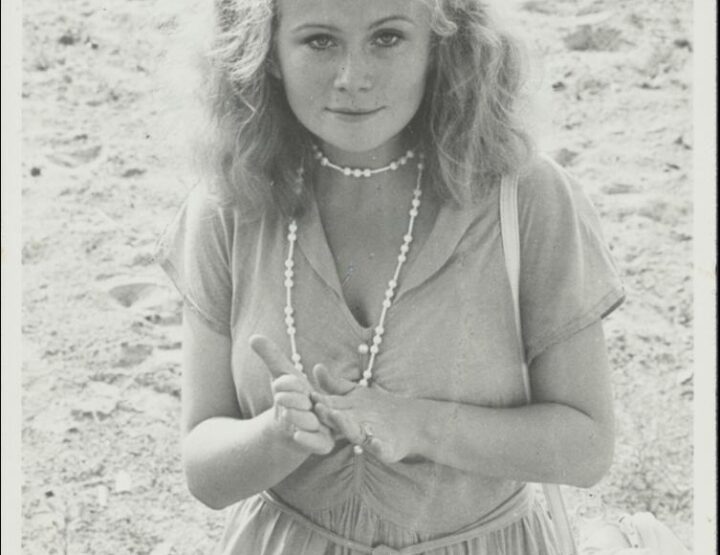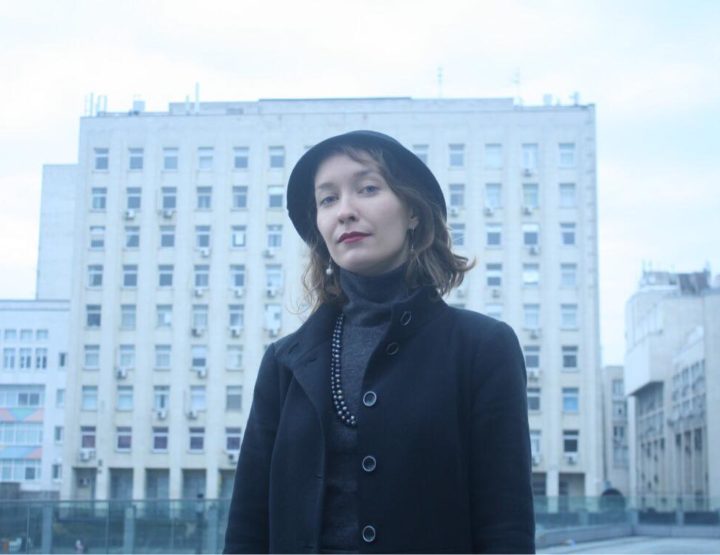Writing about female poets, one inevitably arrives at a disturbing thought: why are some women regarded as poets, and others as poetesses? The idea that some poets write “female poetry” echoes Simone de Beauvoir’s idea that man is defined as a human being and a woman as a female. But is that so?
Aare Pilv has pointed out(1) that the term female poetry carries several contradictory, yet intertwined meanings in Estonian literature. Firstly, there is the widely-admired notion of the “Great Female Poets” of the 19th and 20th century, the central figures of which were Lydia Koidula, Marie Under, and Betti Alver. As early as in 1939, Ants Oras wrote that “women have acquired an astonishing eminence in [Estonian] poetry,” (2) and describes how they had shaped the Estonian literary canon, although this applies almost exclusively to poetry. Oras finds that the remarkable influence of female poets was partly possible because there were no set rules and no examples to follow. Lydia Koidula, one of the first influential poets who played a large role in Estonia’s national awakening during the 1860s, had to “forge her literary weapons herself.”(3) Women could easily gain public notice and play a significant role, because Estonian literature had yet to be invented.
On the other hand, female poetry is often used to belittle and condescend, implying that it is a poetry of lesser quality. Aare Pilv has shown how this alternative use of the term came into existence in the early 1980s in reference to a series of literary debuts by women. Initially a rather neutral and descriptive notion, it became increasingly condescending, and one could say that now, over the last forty years, we have witnessed a patronizing and marginalizing use of the term – one that sounds as absurd as, for example, male politics. Of course, one cannot say that the concept has flourished in Estonian literary criticism. Even so, it seems to reappear periodically. The most recent debate over female poetry sparked in 2013 after a TV show – again, it was a wave of debuts by young female poets that started the discussion. Jürgen Rooste, who was one of the show hosts, described young poetry as “bad girls and good guys” while referring to authors like Sveta Grigorjeva or Helena Läks, who are frank, sharp, and undoubtedly less lyrical than the Great Female Poets; thus appearing rather subversive.
Sveta Grigorjeva’s debut collection Who’s Afraid of Sveta Grigorjeva? (Kes kardab Sveta Grigorjevat? 2013) was a central issue in the discussion about female poetry. The book contains many layers: Grigorjeva’s texts seem, especially at first glance, rebellious and even angry: “I really am crazy // totally unhinged since birth / filled with inexplicable rage / rage against every damn thing I see and touch”. The poetic self in her poems is a girl in her mid-twenties, who doesn’t want to fit into the roles society offers her as a young woman. Being half-Estonian, half-Russian, the problems of “fitting in” only intensify. A good example of this is a poem where a teacher asks children who they would like to be in the fairy tale of Snow White. To the teacher’s disappointment, the narrator chooses the role of the witch, since there are already “17 snow whites / 11 hunters / 6 princes”. Even though most of Grigorjeva’s poems are written in the first person, she masterfully plays with intertextuality, irony, and litotes, creating in fact a polyphony of voices.
Similarly polyphonic is the poetry of Kelly Turk, who implements a plethora of masks and role play in her debut collection Real Life (Reaalne elu, 2014). Her poems’ characters are our peers: girls at a party tagging each other on Facebook; a construction worker making a living in Finland, reflecting over his life; and women who ache for slimmer bodies, or who cannot find happiness without expensive brands. Turk gives these ordinary people with ordinary thoughts and dreams a voice: “waiting for payday again / to go to the store / to spend most of the money in half an hour / to feel like a real human being / because / life is too short / to not / imitate the rich and the beautiful”. She describes people almost exclusively by their surroundings, but paradoxically, this materialistic view also expresses their inner life: her characters yearn for better boyfriends and better looks; for a better life – a real life. She uses a generous amount of slang and internet vocabulary in her texts, which makes her poems an almost anthropological study.
Silvia Urgas has been called a poet of the 90s generation. Her prize-winning collection Destination (Siht / koht, 2015) includes nostalgic lyrics from 90s Estonian pop music, a medical description of the heart, and the poesy of everyday life. Her writing abounds in colloquial metaphors and wordplays: “today all day I’ve felt like a teletext / that heard the word “internet” for the first time / and staring back from the mirror is a floppy disk / not even wanted by hipsters for a high price”. Her generation’s mentality seems to manifest in the hollow gap that lies between real life and the virtual: “please love me / until the internet comes back / before we find the remote / in-between the cushions”. Still, there is an easiness to Urgas’ poems, even when she writes about Estonia’s dependency on Russian gas (and how she’d flee to the forest if there was a war) or homophobic sentiments.
Helena Läks’ first collection Helena Went (Helena läks, 2010 – a play on her name) features long, suggestive lines – streams of consciousness that take hold of the reader with their wild imagination: “unshaven cheeks against plaster plight / we are so velvetly inept / like if Socrates had played handball at a golf club / with the dark hollows beneath his eyes”. Läks’ debut was powerful, yet effortless; imaginative and sophisticated like Jamaican rhythms that meet passages from the Old Testament. In her second collection Corrosion Ache (Korrosioonikihk, 2014), the language is more tamed and even melancholic. She writes about broken relationships, the death of loved ones, and reflects on the passing of time. It is interesting to note that Läks is a poet who doesn’t refer explicitly to the female experience; however, her latest book includes a poem dedicated to the debate around the concept of female poetry. Titled “On female poetry, with one masculine breath” (“Naisluulest ühe mehise hingetõmbega”), it reads: “I’d rather fuck you / than read your poems / so your / femininely narrow / erudition / your poor / expressive ability / is the problem”.
The poetry of Eda Ahi seems to be molded by the tradition of the “Great Female Poets” more than any other contemporary Estonian works. Her first collection Masquerade (Maskiball, 2012) won the Betti Alver Prize for Debut Literature, and she was subsequently seen as a successor to Alver’s style. Indeed, the dominant voice in Ahi’s poems resembles that of Alver’s early works: it is self-conscious and bright-minded, sometimes remarkably straightforward, and occasionally ironic. Ahi also uses rhyme and a wide range of meters, which is rather exceptional in younger Estonian poetry. She further established her distinct style with her next two collections Gravity (Gravitatsioon, 2013) and Security (Julgeolek, 2014), combining rhyme, enjambment, and antithesis – this subtle technique creates multi-layered wordplays that are often untranslatable. Several of Ahi’s poems are dedicated to classical authors (i.e. Virgil and Tolstoy), literary characters such as Anna Karenina, and even mythical figures like the biblical Adam: “although your shadow will long remain / the timber of my ship’s mast / I’ll never, Adam, become / bony enough to be / anyone’s rib bone”.
These five poets, all under the age of 30, give us a certain cross section of what is happening in younger Estonian poetry right now. On the one hand, we find dynamic and colorful spoken language, idioms, and slang; on the other, we can encounter quite traditional style, including classical rhyming techniques. There is an explicit use of personae (e.g. in Kelly Turks’s poems), but also more personal topics, such as in Helena Läk’s poetry. Some of the poets seem to make us close witnesses to their private struggles, as Sveta Grigorjeva; others keep a cool distance from the reader, like Eda Ahi. As one might expect, many references to multimedia and digital artefacts appear: “my brain is of very little use / if it’s not connected to Wikipedia”, as Silvia Urgas candidly writes. However, behind the curtains of everyday routine always lie love, death, happiness, and suffering.
Do these poets have anything to do with female poetry? Yes and no. If the author’s gender is enough to make up a category, then the irritating label might work – it is a convenient topic for literary events or TV arguments. Nevertheless, it sweeps attention away from the poetry itself, redirecting it towards the author. Sometimes this can be useful, but mostly it just shows poor taste. Of course, women can be portrayed as Snow Whites writing verses in their spare time, but this won’t bring us closer to the subject of poetry itself. Notwithstanding the particular intentions of a piece of literary criticism, female poetry always carries the connotation of being something lesser. Yet, there is some hope for change. Perhaps there may even be a few militant feminists around, as Silvia Urgas warns in her poem “tips for the literary reviewer”:
some words of advice for the novice
or experienced tired worn-out
reviewer
[…]
I can understand
if you use the words
female poet
a couple times; I forgive you
but it’d be dumb
to compare me to other women
just because of my gender, too
the internet now has people
who understand that
and will tear you to shreds in public
1 Aare Pilv, “Naisluule – üks mõiste eesti luulekriitikas”. Vikerkaar 10/20011, pp 67–77.
2 Ants Oras, “Naiskirjanikest meil ja mujal” http://www.kirjandusarhiiv.net/?p=540
3 ibid.
Carolina Pihelgas (1986) is a poet and translator. She has published four poetry collections and translated poems into Estonian from Spanish, English, Greek and Norwegian. Pihelgas became the editor of the literary magazine Värske Rõhk in 2011





